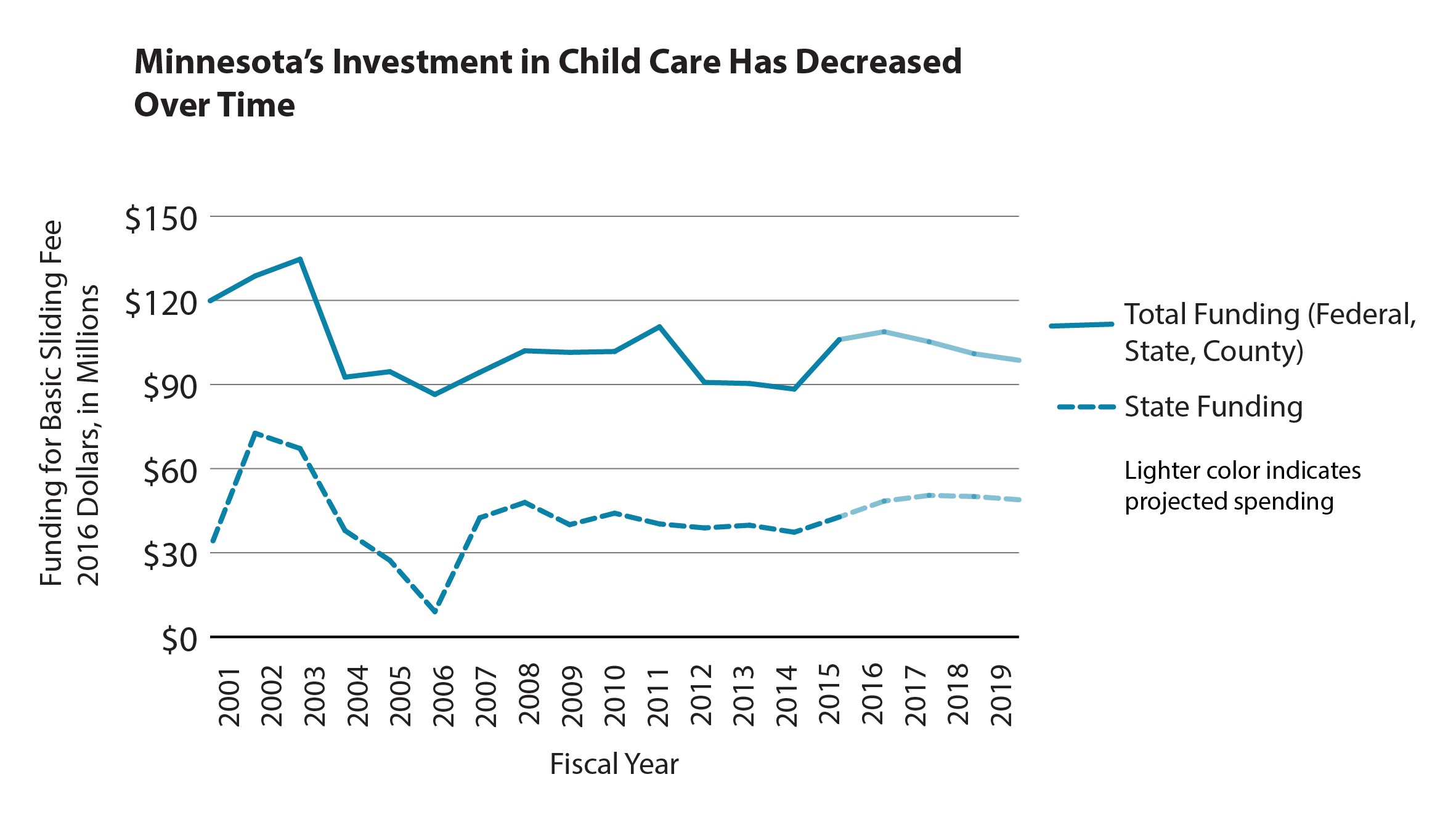If state policymakers fail to invest in child care assistance, fewer families will have access to affordable child care from a shrinking pool of child care providers. Despite the critical role of child care for working parents, their children, and employers, state funding for Basic Sliding Fee Child Care Assistance has decreased dramatically over time. Decreasing reimbursement rates paid to child care providers means that parents utilizing Basic Sliding Fee have fewer options for child care. The grim details are laid out in our newly updated issue brief, Time to Invest in Affordable Child Care through Basic Sliding Fee.
Basic Sliding Fee is a sliding-scale, co-pay based source of assistance to bring down the cost of child care for Minnesota’s working families with kids from age 0 to 12. To be eligible to begin using Basic Sliding Fee, a family has to earn less than 47 percent of the state’s median income for their household size, or about $43,000 for a household of four. But eligibility doesn’t guarantee access — Basic Sliding Fee’s waiting list is currently 7,200 families long. And Basic Sliding Fee serves 37 percent fewer families than it did when it was at its peak 13 years ago.
That situation will only grow worse over time unless state policymakers invest in our families. Taking inflation into account, state funding has already decreased by 28 percent compared to FY 2003, when Basic Sliding Fee served 4,600 more families. And things aren’t getting better — under current funding levels, about 1,200 fewer families will be served in FY 2019 compared to today.

Source: Minnesota Budget Project analysis of Minnesota Department of Human Services data.
The number of child care providers in Minnesota has plummeted by about 20 percent since 2005. That means all parents have fewer choices, but parents using Basic Sliding Fee face an additional challenge in finding stable care. Reimbursement rates to child care providers are set at a rate so low that the maximum rate paid only covers about 30 percent of child care options.
Increased funding for Basic Sliding Fee would support parents, their children, and employers. When we invest in Basic Sliding Fee to put child care within more families’ economic reach, more children enjoy the benefits of consistent, nurturing caregivers and avoid the toxic stress that can come with instability; more parents can get to work or school and advance in their careers; and employers can draw on a bigger pool of reliable workers. If the state also funds increases in provider reimbursement rates, more child care providers would be able to accept families using Basic Sliding Fee without taking a loss. In the long run, higher Basic Sliding Fee payments may also encourage more providers to enter the market.
Child care assistance is too important to allow it to slowly deteriorate and fade away. Governor Mark Dayton took an important step with his supplemental budget by increasing provider reimbursement rates. Policymakers should build on his proposal by investing the funds necessary so more families can participate in Basic Sliding Fee, ensuring that more Minnesotans have consistent access to this crucial necessity that supports families across two generations.